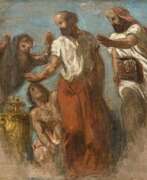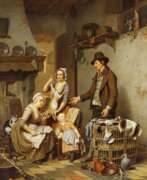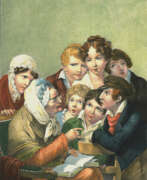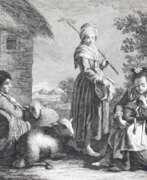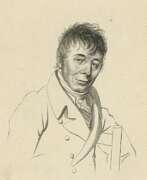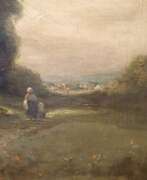Draftsmen 19th century
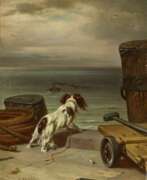

Carl Johann Arnold was a German painter, draftsman, and graphic artist.
He was the son and pupil of the designer and wallpaper maker, landscape and portrait painter, lithographer, and decorator Carl Heinrich Arnold (1793-1874).
He first studied at the Academy in Kassel and then went to Berlin. Carl Johann Arnold painted pictures of animals, canvases on historical events, and numerous portraits. In particular, he created many portraits of the German Emperor Wilhelm II, for which he was apparently appointed royal Prussian court painter. Arnold also produced drawings, etchings, and lithographs that were published in the popular magazines of the time.
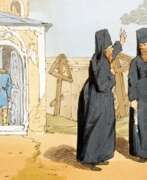

John Augustus Atkinson was a British watercolorist, illustrator and engraver.
In 1784, the young Atkinson traveled to St. Petersburg, Russia, to stay with his uncle James Walker, who worked as an engraver at the court of Empress Catherine the Great. The aspiring artist learned from the work of the great Russian painters whose paintings he saw in the art galleries of St. Petersburg. Catherine and her son Paul I, noticing his talent, commissioned Atkinson to paint pictures on historical subjects.
In 1801 Atkinson returned to England and a year later published an album entitled "Pictorial representation of Russian manners, customs and amusements" on 100 plates drawn and engraved by himself. This work was a great success in Europe. Later, during the Napoleonic Wars, Atkinson created many battle scenes, including the Battle of Waterloo and naval battles. In 1808 he was elected to the Society of Watercolor Painters.


George Franklin Atkinson was a British Army officer and artist.
Atkinson was an officer in the East India Company's Bengal Engineer Service. He published two picture books depicting colonial life in India in the mid-nineteenth century.


Charles Aubry was a French painter, illustrator and caricaturist who worked in Saumur from 1810-1840.
From 1817. Aubry made drawings and illustrations of military costume. He was soon recognized as one of the best lithographers and draughtsmen of military scenes, showing a particular talent for depicting cavalry. Charles Aubry's colored lithographs were published in a publication on the uniforms of the Swiss Royal Guard (Collection des Uniforms de l'Armee Francaise, 1823), as well as caricatures in the Comic Album de Pathologie (1823).
In 1822 Charles Aubry was appointed professor of art at l'Ecole Militaire de Saumur.


Guido Bach was a German portrait painter who focused mainly on watercolor painting. Bach traveled to Italy, Bohemia, and also visited Egypt. He created portraits and depictions of Italian village life, battle scenes, and images of North African Arab life.
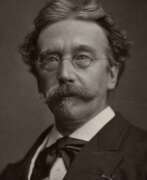

Alexander Hugo Bakker Korff was a 19th-century Dutch genre painter. He was a pupil of the painters Cornelis Kruseman and Huib van Hove. He was trained in the 1840s at the Koninklijke Academie van Beeldende Kunsten in the Hague and the Koninklijke Academie. He became known for his "Bakker Korffjes" – genre pieces of ladies in caps in interiors, that he started painting in 1856 while he was living in Oegstgeest with his sisters as models. In 1870 he was awarded the title ridder in de Leopoldsorde after his works were presented at an exhibition in Brussels in 1869.


William Henry Bartlett was an Irish-born British painter and member of the Royal Society of British Artists. He painted a large number of pictures of the hard life of the common people of Ireland, as well as many coastal and rural landscapes of this rugged country.
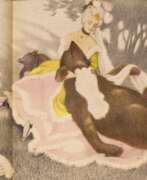

Moritz Bauernfeind was an Austrian painter, graphic artist, illustrator and cartoonist.
Moritz studied at the Academies of Fine Arts in Vienna and Munich, then at the Académie Julian in Paris, early landscapes painted in the style of Impressionism.
Bauernfeind gained fame in the early 20th century as an illustrator of political satire, notably in Meggendorfer's Humorous Notes and Der Flo. Between 1900 and 1905 he published more than 200 satirical drawings in Der Scherer and Simplicissimus, and in 1909 a series in the Illustrirten Zeitung in Leipzig. And color illustrations for fairy tales and legends were eagerly published by juvenile and many other publications. Bauernfeind's fantastic genre images with stylized figures and a touch of burlesque attract with their unusualness and mystery.


Thomas Mann Baynes was a British painter and draughtsman and lithographer.
Thomas Mann Baynes was born into the family of the famous watercolorist James Baynes. He traveled extensively throughout Ireland during his career, creating romantic and pastoral views of the countryside that were popular in the 19th century. Many of these were later engraved and published. Baynes also created many architectural landscapes with monumental buildings, such as views of the Thames in London and the Canterbury and Whitstable Railway. Today, these engravings are of great historical value.


Peter Becker is a German landscape painter, engraver, and lithographer. In his many landscape works he romanticizes the German forest and enlivens it with historical characters. He also painted genre scenes and depicted city streets.


Karl Biese was a German landscape painter, draftsman, and lithographer. After initially working as a theater painter, he received a scholarship to study at the Karlsruhe Academy of Fine Arts in 1883. Biese later returned to Hamburg, where he became a master painter and established his own business. Biese was one of the founders of the Karlsruhe Artists' Association and created lithographs for the association's print workshop. He found inspiration for his nature-themed works during his travels around Karlsruhe, the Black Forest, the Moselle region, and northern Germany. Biese was particularly known for his atmospheric paintings, especially his winter scenes. He primarily worked with oil painting and lithography mediums. Biese also designed collectible images for Stollwerck chocolate company's albums.
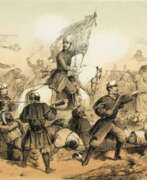

Bernardo Blanco y Pérez was a Spanish lithographer, painter and illustrator.
He studied at the Royal Academy of San Fernando, mainly drawing and lithography, and taught. Bernardo Blanco was one of the artists whose work was included in a series of lithographs on the Spanish-Moroccan War (1859-1860).


David Bles was a 19th-century painter from the Northern Netherlands. According to the Netherlands Institute for Art History, at the age of thirteen Bles was talented enough to be accepted at the Hague Academy. He attended classes from 1834 to 1837 and from 1838 to 1841. He became a pupil of the painter Cornelis Kruseman and his nephew Jan Adam Kruseman. Bles then travelled to France to study with Joseph-Nicolas Robert-Fleury in Paris. He remained in Paris until 1843 after which he settled in The Hague, though he was a member of the Royal Academy in Amsterdam between 1845 and 1899. He painted scenes from the history of Dutch painting and is best known for portraits and genre paintings.
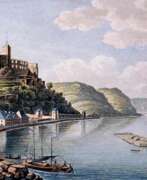

Rudolf Bodmer was a Swiss painter, draughtsman and engraver.
Rudolf was the older brother of the famous painter Johann Carl Bodmer (1809-1893), with whom he started his own business around 1825. They produced graphic prints especially for the Zurich publisher F. S. Füssli. Rudolf Bodmer became a skilled printmaker and produced a large number of aquatints of landscape and architectural views, particularly of castles and palaces in the Middle Rhine for a wide variety of publishers.


Louis-Marin Bonnet (French: Louis-Marin Bonnet) is a French draftsman and engraver, an outstanding master of metal engraving using the “pencil style” technique. Since 1757, Louis-Marais Bonnet was a student of Jean-Charles Francois, then of Gilles Demarteau. He became famous for his color engravings reproducing drawings by A. Watteau, F. Boucher, Sh.-A. Van Loo, J.-B. Yue. Bonnet reproduced mainly complex pastel drawings, using up to eighty boards per engraving. He used opaque paints that gave a matte tone and tinted paper. He reproduced the spaces by printing with white from a separate board. Bonnet even imitated the golden frames bordering the original drawings. This technique is called “pastel style”. In 1769, Bonnet described his technique in detail in the book Pastel in Engraving, Invented and Executed by Louis Bonnet. In 1765-1767, the French master worked in St. Petersburg, where he completed several engraving portraits in the “pencil style” of Catherine II and the heir Pavel Petrovich based on drawings by Jean-Louis de Velli, then returned to Paris and opened his own workshop.


Victor Elpidiforovich Borisov-Musatov (Russian: Ви́ктор Эльпидифо́рович Бори́сов-Муса́тов) was a distinguished Russian artist celebrated for his unique contribution to the Post-Impressionist movement, combining elements of Symbolism, realism, and a decorative style that was all his own. Born in 1870 in Saratov, Russia, into the family of a former serf, Borisov-Musatov overcame early challenges, including a spinal injury that left him humpbacked, to emerge as a pivotal figure in Russian art. His education spanned the Moscow School of Painting, Sculpture and Architecture, and the Imperial Academy of Arts in Saint-Petersburg, further enriched by studies in Paris under the tutelage of Fernand Cormon. His admiration for French contemporaries, especially Pierre Puvis de Chavannes and Berthe Morisot, profoundly influenced his artistic direction.
Borisov-Musatov is renowned for his lyrical, evocative works that often depict the serene and idyllic life of the 19th-century Russian nobility, set against the backdrop of their estates. This half-illusory world, which he masterfully created, reflects a deep nostalgia and a retreat from the industrial harshness of his time. By integrating figures seamlessly into the landscapes, as seen in masterpieces like "The Pool" (1902) and "The Phantoms" (1903), he achieved a harmony that resonates with viewers for its beauty and tranquility. His use of mixed media, including tempera, watercolor, and pastel, allowed for subtle visual effects, making his works distinctive in their soft, dreamlike quality.
Borisov-Musatov's legacy extends beyond his paintings; he was a significant figure in the Russian Symbolist movement and a founding member of the Moscow Association of Artists. His works, which provide a poignant, poetic commentary on the era he lived in, are celebrated in Russian and international art circles alike. Notable paintings like "The Pool" and "The Phantoms" not only highlight his technical skill but also his ability to evoke emotion and atmosphere, making them favorites among collectors and art enthusiasts.
For collectors and experts in art and antiques, Borisov-Musatov's oeuvre offers a fascinating glimpse into the Russian Symbolist movement and the broader cultural milieu of the late 19th and early 20th centuries. His works, preserved in museums and private collections around the world, continue to enchant and inspire.
For those interested in staying informed about new product sales and auction events related to Victor Elpidiforovich Borisov-Musatov, subscribing for updates is highly recommended. This subscription ensures that enthusiasts and collectors alike will not miss the opportunity to own a piece of this remarkable artist's legacy, encapsulating the elegance and serenity that define his work.


François-Antoine Bossuet was a painter and draughtsman of the Belgian school. Bossuet is known for his depictions of the landscapes, cities and monuments of Spain and Italy, with an emphasis on historic places, occasionally with genre scenes of everyday life. He is noted for the excellence of perspective in his paintings. He was professor at the Academy of Fine Arts in Brussels, from 1855 until 1876. His works may be seen in the Royal Museum of Fine Arts, Antwerp, the Royal Museums of Fine Arts of Belgium in Brussels, and the Victoria and Albert Museum in London.


Selina Bracebridge, née Mills, was a British artist, medical reformer, writer and traveler.
Selina studied art with the painter Samuel Prout and traveled extensively, married Charles Holt Bracebridge, and lived in Athens. During the Crimean War, she and her husband worked in the hospital with Florence Nightingale, the founder of modern nursing.
Among Selina Bracebridge's paintings are a famous panorama of Jerusalem taken from the roof of the Governor's Palace, landscapes of Athens and others.


Albrecht Peter Bräuer was a German painter and draftsman, from 1860 a teacher at the School of Applied Arts in Breslau. Paintings for various places of worship, Bräuer soon made a name for himself as a church and history painter. In addition to this painting, he produced materials for art classes, such as templates for drawing classes, an ornamental work with 40 lithographs, which won a gold medal at a Berlin exhibition in 1878. He also copied works by old masters. He also engaged in experiments on dyes and art-theoretical research on perspective, anatomy and proportions. In addition, he collected engravings and drawings depicting garments, art objects from different times and cultures, as well as folders with ornamental, plant, perspective and anatomical studies for his studio at the art school.


Ferdinand Max Bredt was a German orientalist painter. He traveled extensively, including Italy, Greece, Turkey, and Tunisia, and created a series of paintings of harems and odalisques as well as landscapes and academic paintings.


Carl Buddeus, full name Carl Friedrich Christian Buddeus, was a German painter, draftsman and engraver.
After studying at the Salzmann School in Schnepfenthal, Carl Buddeus went to Estonia. For several years he worked as a teacher on the island of Osel (now Saarema) and made sketches of local landscapes. Later Buddeus worked as a tutor and illustrator in Russia in St. Petersburg and Pskov. In 1820, two of his booklets with hand-colored lithographs depicting the life and peoples of Russia were published in Leipzig.


Joseph-Casimir Konstantinovich Budkevich (Russian: Иосиф-Казимир Константинович Будкевич) was a Ukrainian painter and draftsman, born on April 18, 1841, in Kyiv. Known for his battle scenes and landscapes, Budkevich studied at the Imperial Academy of Arts in Saint Petersburg, where he received several medals for his works. In 1873, he was awarded the title of Class Artist 3rd Degree.
Budkevich traveled to Italy, France, Spain, and Palestine to refine his skills. In the late 1870s and 1880s, he taught at the Kyiv Drawing School, where one of his students was Mykola Pymonenko. From 1887 to 1895, he was a member of the Kyiv Society of Art Exhibitions.
Among his notable works are "Pilgrim at the Monastery Wall" (1883) and "Jerusalem" (1894). These paintings are exhibited at the Kyiv Museum of Russian Art and the Pskov Art Gallery. His work is highly valued by collectors and art experts for its uniqueness and mastery.
If you want to receive notifications about new arrivals and auctions related to Joseph-Casimir Budkevich's work, subscribe to our updates. We will keep you informed about new sales and events related to his legacy.




Anton Burger was a German painter, draftsman and etcher. He was a prolific and versatile painter, producing works in almost every genre. His paintings sold very well and, in the area around Kronberg, it was considered a sign of good taste to have a "Burger" in one's home. In 1861, he and Jakob Fürchtegott Dielmann (an old friend from his days at the Städelschule) founded the Kronberg Artists' Colony, where he remained until his death. He was highly regarded and came to be known as the "King of Kronberg".


Georg Conrad Ludwig Burger was a German historical painter, illustrator, and medallist. He studied at the Berlin Art Academy, at the same time working at book illustrating; he was also a pupil of Thomas Couture in Paris. Among his best drawings are the illustrations for the works of La Fontaine and a collection of 20 plates known as Die Kanone. After 1869, he devoted himself to decorative painting, his most important work in this line being the walls and ceilings in the Berlin City Hall (1870) and the colossal figures symbolizing the warlike virtues at the School of Cadets at Lichterfelde (1878).


Heinrich Christian Wilhelm Busch was a German humorist, poet, illustrator, and painter. He published wildly innovative illustrated tales that remain influential to this day.
Busch drew on the tropes of folk humour as well as a profound knowledge of German literature and art to satirize contemporary life, any kind of piety, Catholicism, Philistinism, religious morality, bigotry, and moral uplift.
His mastery of drawing and verse became deeply influential for future generations of comic artists and vernacular poets. Among many notable influences, The Katzenjammer Kids was inspired by Busch's Max and Moritz. Today, the Wilhelm Busch Prize and the Wilhelm Busch Museum help maintain his legacy. The 175th anniversary of his birth in 2007 was celebrated throughout Germany. Busch remains one of the most influential poets and artists in Western Europe.


Louis-François Cassas was a distinguished French landscape painter, sculptor, architect, archeologist and antiquary.
Besides his architectural and archaeological drawings and sketches, he drew numerous costumes studies, views and processions, as well as scenes from daily life, plants and animals of all sorts. He also exhibited views of his travels at the "Salons", which were periodic art exhibitions sponsored by the French Académie Royale, in 1804 and 1814, and published Picturesque views of the Principal Sites and Monuments of Greece, of Sicily, and of the Seven Hills of Rome, of which thirty parts had already been published by 1813.
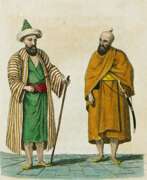

Antoine-Laurent Castellan was a French painter, engraver and architect.
Castellan traveled to Turkey, Greece, Italy and Switzerland. He was the official artist of the mission of Engineer Ferrego to the court of Sultan Selim III, spending several months in Constantinople in 1797. Castellan was a prolific draughtsman, making notes of everything he saw in Constantinople, and also engaged in portrait painting of socialites, which he captured in numerous works he published on his return to France. His best-known work is The Manners, Customs and Costumes of the Otomans and a Brief Account of their History, published in 1812.


James Henry Charles was a British impressionist painter.
He studied at the Heatherley School of Fine Arts on Newman Street and at the Royal Academy School, and painted portraits and landscapes as well as genre scenes from life.


George Chinnery was a British painter best known for his work in India and China.
George studied at the Royal Academy schools, painting portraits and sketches, but in 1802, shortly after his marriage, trying to straighten out his family's financial situation, he traveled to India. In Calcutta, Chinnery became the leading artist of the British community in India. And in 1825 he went to China and lived in Macau for the rest of his life.
Chinnery painted portraits of Chinese and Western merchants, visiting sea captains and their families. Chinnery also painted landscapes (both in oil and watercolor) and made many vivid drawings of Macau residents of the time engaged in their daily activities. Among the heroes of his portraits are the Scottish opium merchants who patronized him. In addition to their artistic value, Chinnery's paintings also have historical value, as he was the only Western artist living in South China during the early to mid-19th century.
There are still many architectural sites in Macau recognizable from his sketches that have changed little since then. Today, Chinnery's paintings are in public and private collections around the world. The Macau Museum and the Macau Art Museum have a good selection of his work.


Alfred Jean Andre Cluysenaar was a Belgian Portrait painter. Jean Alfred was a member of the Cluysenaar family, an artistic family from Brussels. He became the father of the painter André Cluysenaar. He studied in the Académie Royale des Beaux-Arts of Brussels in the atelier of Joseph Jaquet and François-Joseph Navez. He painted some important decorations in the Royal Zoo of Antwerp and in 1861-1876 he ornated the Aula in Ghent. Cluysenaar was famous for his monumental decorations of high quality. Awarded in the expositions of Brussels, Ghent, Paris Vienna and London. Some of his paintings are kept in the Royal Museum of Fine Arts Antwerp.
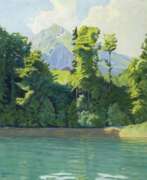

Plinio Colombi was a Swiss painter and graphic artist. For his paintings he often chose landscape motifs of the Lake Thun region and also painted still lifes. His works include prints, paintings, etchings, aquatints, lithographs, woodcuts, drawings, and posters.


George Cumberland the Younger was a British painter.
George Cumberland the Younger was the son of the painter George Cumberland (1754-1848). Like his father, he was interested in experimental printmaking, and is known for a series of etchings depicting the British military campaign in Spain and Portugal.
In 1816-18. Cumberland the Younger exhibited at the Royal Academy.
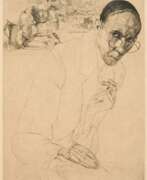

Jules De Bruycker, a Belgian graphic artist and etcher, is renowned for his depictions of Ghent, cathedrals, war scenes, and book illustrations. He achieved technical virtuosity in his prints and was considered one of Belgium's greatest etchers. His work showcased crowds and dramatic lighting, providing an intimate view of daily life in Ghent. De Bruycker's influences ranged from Flemish traditions to artists like Brueghel, Bosch, and Ensor. His later work included prints of cathedrals, figure studies, and sensuous nudes. De Bruycker's art greatly influenced his contemporaries, including Gustave van de Woestijne.


Hendrik Frans de Cort was a Flemish landscape painter and draughtsman. In 1770 he became a master in the Antwerp Guild of Saint Luke. His early landscapes from the time before he moved to England were often made in collaboration with other Flemish artists. De Cort is known for his topographical views of English and Welsh landscapes. These were painted in an Italianate idiom indebted to the style of Gaspar Dughet. He often painted on specially prepared mahogany panels.




Jean Baptiste de Jonghe was a Belgian painter, draughtsman, etcher and lithographer. He is known for his Romantic landscapes with people, herds and ruins. In his graphic work he also made views of cities in the area of what is now Belgium and the Netherlands. He was an art professor at the Academy of Kortrijk and the Antwerp Academy of Fine Arts.


Pieter Cornelis de Moor, a Dutch artist, stands out as a versatile and innovative figure in the art world. His education at the Academy of Visual Arts in Rotterdam and the Drawing Academy in Antwerp laid the foundation for a career marked by diversity and creativity. De Moor's achievements, including a silver medal in the Prix de Rome in 1887, underline his early recognition and the promise of his artistic journey.
De Moor's artistry was not confined to a single medium; he was adept in drawing, etching, painting, watercolor, producing lithographs, and working as an illustrator. His artworks, ranging from "Dancing Women" to "Poultry on a Yard" and "An Elegant Lady Feeding Peacocks," showcase his broad thematic interests and technical skills. Notably, his works are held in prestigious collections, including the Rijksmuseum and the Dordrechts Museum.
The artist's life was rich with experiences, having worked across Europe and eventually settling in the United States. His legacy, punctuated by exhibitions in museums such as Museum Boijmans Van Beuningen and the Drents Museum, continues to captivate art enthusiasts and collectors.
For collectors and art experts, delving into the works of Pieter Cornelis de Moor offers a unique glimpse into the evolution of Dutch art. His contributions, particularly in the realm of Symbolism, highlight an era of artistic exploration and innovation.
Stay informed about new product sales and auction events related to Pieter Cornelis de Moor by signing up for updates. This subscription is your gateway to the latest acquisitions and opportunities in the world of this distinguished artist.


Dunoyer de Noirmont, full name Baron Joseph-Anne-Emile-Edouard Dunoyer de Noirmont, was a French writer, historian, and draftsman.
Baron Dunoyer de Noirmont wrote books on the history of hunting in France. Among his other famous works is the voluminous tome French Military Costumes, which describes the organization, arms, clothing, and equipment of the various army corps. It is the joint work of Dunoyer de Noirmont and the historian and artist Alfred de Marbeau (1812-1865). This monument to French military costume from 1439 to 1815 consists of hand-colored lithographed plates with explanatory texts.


Armand de Pasmond was a French naval officer and artist.
Famous is his book Cahier de Costumes Commencé en 1836 et fini en 1840, drawings for which he made while traveling in the Mediterranean, North Africa and Reunion Island. The book contains many images of military uniforms, especially naval uniforms, and of soldiers in Sardinia, Corsica, and Algeria. The album has several landscapes of Morocco and Algeria, which had just, in 1833, become a French colony. With beautiful watercolors and sketches of views of Africa, soldiers and locals, and drawings of accurately drawn ships, this album by Pasmond is a testament to life in Algeria at a particularly important stage in its history.




Alexander Ivanovich Dmitriev-Mamonov (Russian: Александр Иванович Дмитриев-Мамонов) was a Russian military commander and battle painter, known for his significant contributions both in the military and in the arts. Born on December 24, 1787, in Saint Petersburg, he was the son of Major-General Ivan Dmitriev-Mamonov. His early career saw him serving as an actuary at the Collegium of Foreign Affairs and later at the State Chancellery.
Dmitriev-Mamonov joined the People's Militia in 1812, rising to the rank of Lieutenant and participating in key battles such as Borodino and Krasnoi during the Napoleonic Wars. By 1823, he was promoted to Colonel and subsequently to Major-General in 1831, commanding various cavalry regiments. Apart from his military endeavors, Dmitriev-Mamonov was also an accomplished amateur artist. He co-founded the Imperial Society for the Encouragement of the Arts and established a drawing school in 1827. His battle sketches and watercolors are prominently displayed in Tsarskoye Selo.
In 1835, he transitioned to civil service, becoming a State Councillor at the Ministry of Internal Affairs. His notable awards include the Order of Saint Vladimir, Order of Saint Anna, and the Medal "For the Capture of Paris." Dmitriev-Mamonov's legacy is preserved through his artistic works and his contributions to Russian military history.
For more updates on auctions and sales related to Alexander Ivanovich Dmitriev-Mamonov's works, sign up for our newsletter to stay informed about new product sales and auction events.


Gustave Doré, full name Paul Gustave Louis Christophe Doré, was a French painter, sculptor, graphic artist, illustrator, and cartoonist.
Doré was very industrious and prolific: he created more than 10,000 illustrations for art books as well as the Bible. He decorated the works of Rabelais, Balzac, Cervantes, Dante and Milton with his lively drawings, making Doré's name famous. He had a special gift for illustrating nature and fairy tales.


John Dunlop was a British physician and artist.
As Assistant Surgeon of His Majesty's 32nd Regiment, John Dunlop participated in and witnessed the Siege of Multan, Pakistan, a five-month standoff between the city and state of Multan and British East India Company troops in 1848. He made numerous sketches from the scene. Based on his drawings, a work entitled Multan during and after the siege was published. It included 21 drawings by John Dunlop, lithographed by Andrew Maclure, with a descriptive and historical account of the siege.
The siege lasted from April 19, 1848, when a rebellion in the city against a ruler imposed by the East India Company led to the outbreak of the Second Anglo-Sikh War, until January 22, 1849, when the last defenders surrendered.


Pavel Pavlovich Dzhogin (Russian: Павел Павлович Джогин) was a Russian landscape painter, renowned for his atmospheric and detailed depictions of the Russian countryside. Born in 1834, Dzhogin captured the serene beauty of rural Russia with a meticulous eye for natural beauty and atmospheric effects.
Dzhogin's works are celebrated for their tranquility and realism, often showcasing vast skies and expansive fields. His paintings, such as "Пейзаж с рекой и рыбаком" (Landscape with a River and Fisherman), "Зимний пейзаж" (Winter Landscape), and "Вечер" (Evening), reflect his mastery of light and shadow, making his landscapes both realistic and evocative.
Notably, Dzhogin's works are held in prestigious museums, including the State Tretyakov Gallery in Moscow and the Russian Museum in St. Petersburg. His art continues to be admired by collectors and enthusiasts, offering a window into 19th-century Russian vistas. Sign up for updates on new Pavel Pavlovich Dzhogin pieces and upcoming auction events.
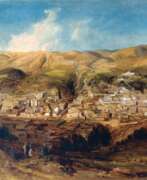

Daniel Thomas Egerton was a British landscape painter, draughtsman and printmaker.
Early in his artistic career, Egerton exhibited at the newly formed Society of British Artists, later to become the Royal Society of British Artists, and painted satirical illustrations on fashion.
In 1831 he traveled to Mexico, where he painted many landscapes, and in 1840 published a series of lithographs, Egerton's Views of Mexico, with accompanying texts. Egerton and gained fame for his depictions of Mexican culture and society - the series was very popular in Europe. However, his adventurous life ended in tragedy - Egerton was murdered in Mexico City.


Samuel Eschauzier was a painter active between 1830 and 1840.
In collaboration with the artist L. Mansion, Samuel Eschauzier prepared for the publisher W Spooner a series of drawings "Officers of the British Army" depicting the uniforms of many regiments of the British Army.


Henri-Jacques-Edouard Evenepoel was a Belgian artist whose most important works are associated with Fauvism. The artist debuted a portrait of his cousin (Louise in Mourning) at the 1894 Salon des Artistes Français. He showed four portraits at the Salon du Champ-de-Mars in 1895 and continued to exhibit there until his death. His first solo exhibition came at the Brussels Cercle Artistique (December 1897 – January 1898). Family and friends were the artist's preferred subjects; his full-length portraits, often against a neutral background, show the influence of Édouard Manet and James Abbott McNeill Whistler. His Parisian scenes were influenced by Henri de Toulouse-Lautrec and Jean-Louis Forain. Though his early scenes had a somber palette, his paintings while in Algeria (where he first wintered during his solo exhibition) were very different in style, anticipating the bold colours of Fauvism (e.g., Orange Market, Blidah).


Otto Clemens Fikentscher the Elder was a German painter, draughtsman and illustrator of the Düsseldorf School. Although it is unclear whether he is related to the artist Otto Fikentscher, who was married to Jenny Fikentscher, Otto Fikentscher (the Elder) studied at the Düsseldorf Art Academy and specialised in historical painting and the depiction of horses in battle scenes. He was a member of the artists' association Malkasten and served as a war correspondent during conflicts such as the German-Danish War and the Franco-Prussian War. Fikentscher's works were reproduced in popular magazines and showed his lively and dynamic style.
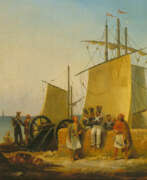

Noel-Dieudonné Finart was a French painter and draftsman.
A painter of battle and war scenes, Finart carefully sketched the ammunition and equipment of foot soldiers and cavalry, depicting the historical events of Napoleon's campaigns in Russia and the Middle East. He also painted landscapes, portraits, and hunting scenes. Finart exhibited his work regularly at the Salon from 1822.


John Flaxman was a British sculptor and draughtsman, and a leading figure in British and European Neoclassicism. Early in his career, he worked as a modeller for Josiah Wedgwood's pottery. He spent several years in Rome, where he produced his first book illustrations. He was a prolific maker of funerary monuments.


Simon Fonceca was a British-Portuguese artist based in Madras, India in the mid-19th century.
Between January 1851 and March 1853, he published twelve issues of sketches entitled Sketches in India Chiefly from Nature. As Fonceca himself wrote, the purpose of his work was "to present not only picturesque landscapes and other objects of local interest.... but also to describe the costume of the natives, their dwellings, huts, the implements used in their crafts, and the beautiful variety of trees characteristic of this country."
The lithographed sheets for this work were made by J. Dumphy, draughtsman and author at the Government Lithographic Printing Office in Madras.




